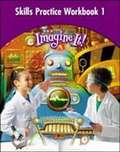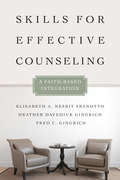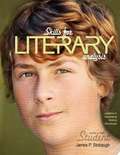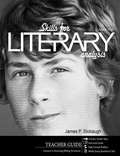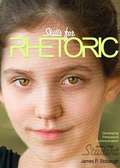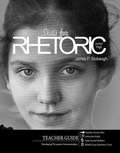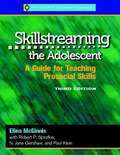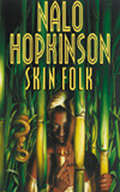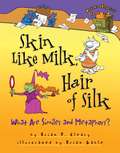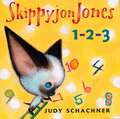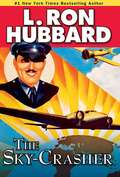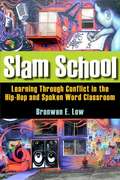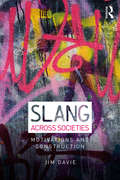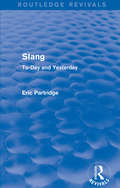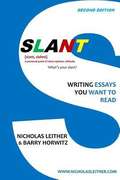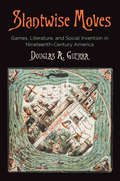- Table View
- List View
Skills for Effective Counseling: A Faith-Based Integration (Christian Association for Psychological Studies Books)
by Heather Davediuk Gingrich Fred C. Gingrich Elisabeth A. Nesbit SbanottoSkills for Effective Counselingmulticultural counselingbiblical/theological applicationscurrent and seminal research related to microskillsdiagnostic and theoretical implicationsclinical tips for using skills in "real world" counseling settingsthe relevance of specific microskills to interpersonal relationships and broader ministry settings
Skills for Literary Analysis (Student)
by James P. StobaughEquips high school students to analyze classic literary genres, discern author's worldviews, and apply biblical standards. Helps you build vocabulary by using new words in every speech and essay. Gain in-depth instruction in the subjects of grammar, punctuation, and spelling. Learn to convey important ideas in both writing and speech in this easy-to-follow, daily format. This is a dialectic and logic level course that prepares students for later academic pursuits. This 35-week course presents diverse writings, from Shakespeare to Jack London, Lewis Carrol to Longfellow, and Sir Walter Scott to C.S. Lewis. Students are taught to analyze key elements of literature such as allegory narrative, satire, plot, setting, and more. While Dr. Stobaugh scrutinizes all literature from a Christian worldview, his instruction also helps students develop their skills in public speaking, writing, and discernment to empower them to be more effective Christian apologists. In the steps of Augustine, Milton, and Lewis, students are invited to analyze the classics with a keen, discerning eye, and to identify positive and negative components of literary worldviews emergent among the classics.
Skills for Literary Analysis (Teacher)
by James P. StobaughThe Teacher Guide for Skills for Literary Analysis: Lessons in Assessing Writing Structures.
Skills for Rhetoric (Student)
by James P. StobaughHelps high school students develop the skills necessary to communicate more powerfully through writing and to articulate their thoughts clearly.Develop creative writing skills including descriptive writing, poetry, and short stories.Cultivate the use of expository writing including research papers, analytical essays, problem-solution writing, and firsthand accounts.Learn the art of public speaking, including persuasive speeches, informative speeches, debates, and more.Rhetoric is the ancient skill of persuasive speech used by teachers, preachers, politicians, and others to influence, incite, and instruct. This course includes basic grammar and writing composition, and mastering this time-honored skill will set your students apart with distinguished written and oral abilities.This 34-week, critical-thinking course will take the student through the writing of numerous academic essays, several public speaking presentations, and an extensive research paper. Dr. Stobaugh weaves biblical concepts, readings, and applications throughout the curriculum to help equip students to stand firm in their faith and become the light of Christ in a deteriorating culture.
Skills for Rhetoric (Teacher)
by James P. StobaughRhetoric is the ancient skill of persuasive speech used by teachers, preachers, politicians, and others to influence, incite, and instruct. This course includes basic grammar and writing composition, and mastering this time-honored skill will set your students apart with distinguished written and oral abilities. This Teacher's Guide accompanies James Stobaugh's Skills for Rhetoric student book. It provides an instruction guide, daily concept builders, and weekly essay questions and tests.
Skillstreaming the Adolescent: A Guide for Teaching Prosocial Skills
by Ellen McGinnisSkillstreaming the Adolescent employs a four-part training approach--modeling, role-playing, performance feedback, and generalization--to teach essential prosocial skills to adolescents. This book provides a complete description of the Skill streaming program, with instructions for teaching 50 prosocial skills.
Skin Folk
by Nalo HopkinsonThroughout the Caribbean there are stories about people who aren't what they seem. Skin gives these folk their human shape. When the skin comes off, their true selves emerge. And whatever the burden their skin bears, once they remove it, skin folk can fly...<P>Nalo Hopkinson has gained universal acclaim as one of the most impressively original authors to emerge in years. Her debut novel, "Brown Girl in the Ring," won the "Locus" Award for Best First Novel, became a finalist for the Philip K. Dick Award, and garnered Hopkinson the John W. Campbell Award for Best New Writer. Her second novel, "Midnight Robber," was a "New York Times" Notable Book of the Year and a finalist for both the Nebula and Hugo Awards.<P>Now she presents "Skin Folk," a richly vibrant collection of short fiction that ranges from Trinidad to Toronto, from fantastic folklore to frightening futures, from houses of deadly haunts to realms of dark sexuality. <P>Powerful and sensual, disturbing and triumphant, these tales explore the surface of modern existence... and delve under the skin of eternal legends.
Skin like Milk, Hair of Silk: What Are Similes and Metaphors?
by Brian P. ClearyWhat Are Similes and Metaphors? Are you as clever as a fox? Or perhaps you're as sharp as any spike? If so, this book will be a piece of cake! Clever rhymes from Brian P. Cleary and humorous illustrations from Brian Gable present similes and metaphors. When it comes to grammar, this team is not as slow as thick molasses. Oh no, they're as bright as polished pennies! Each simile and metaphor is printed in color for easy identification in this gem of a book. Read it aloud and share in the delight of the sense--and nonsense--of words. Ages 7-11 (scanner's note, the words in color have been made words in bold)
Skippyjon Jones 1-2-3 (Skippyjon Jones)
by Judy SchachnerSkippyjon Jones, the Siamese kitty boy who thinks he is a Chihuahua, can count! He is one naughty kitty, with two big ears, and three little sisters. Little ones will love to count along with him as he bounces his way from one to ten.
Skippyjon Jones Shape Up (Skippyjon Jones)
by Judy SchachnerSkippyjon has an overactive imagination. And he is pretty active himself. Here he shapes up with shapes: he runs in a circle, tap-dances on a square, orbits an oval. And then the great sword fighter shows his muscles.
Sky Birds Dare!
by L. Ron HubbardStep back in time with this riveting tale of daredevils, pilots and brutal madmen. Ace glider pilot Breeze Callaghan is trying to demonstrate to the Navy the value of gliders and gliding techniques in war. There are two ways Breeze believes they can be used to aid the war effort: they'll keep a plane aloft when engines cut out, and gliders will be able to enter enemy airspace silently--a perfect way to spy undetected. Callahan's ruthless competitor, Badger O'Dowell, has other ideas. Badger's determined to get the Navy to buy his training ships instead. When testing gets underway to prove the mettle of their designs, sabotage and betrayal threaten to destroy not only Callahan's dream of glider flight in war, but also his life. "Highly recommended for aviation action/adventure pulp fiction fans." --Midwest Book Review
Sky and Earth: Travelling with Dante Alighieri and Marco Polo
by Giuseppe Mussardo Gaspare Polizzi700 years after Dante Alighieri's death, this book intertwines the voice of the great poet with that of an exceptional contemporary, Marco Polo, who was equally curious about the geography of both earthly and celestial worlds. If Polo was the “ordinary genius” of the XIII century, the designation of “sorcerer genius” must go to Alighieri, the man with encyclopedic wisdom, at ease with his era’s philosophy, theology, and science. The sorcerer genius—well versed in this world—must create their own, which he did with The Divine Comedy. On the other hand, The Travels of Marco Polo, the greatest classic in travel literature, offers wonder and provides delight. This book combines the unforgettable characters of both books, the darkness of the infernal landscapes with the immensity of the Asian deserts, the richness of the Mongol empire with the glamor of medieval philosophy, the aspirations and dreams of two great explorers with knowledge of the science of their time, as well as the ever-eternal cosmology. This is an accessible and entertaining book for high school students, scholars of scientific history and the history of ideas, and curious readers who want to know more about Dante and Marco Polo and their unquenchable thirst for knowledge.This book is a translation of an original German edition. The translation was done with the help of artificial intelligence (machine translation by the service DeepL.com). A subsequent human revision was done primarily in terms of content, so that the book will read stylistically differently from a conventional translation.
Sky-Crasher, The
by L. Ron HubbardRiveting historical account of daredevils, pilots and brutal madmen. Caution Jones is a second-generation ace pilot desperately trying to bury his past and the memories of his father-- a daredevil barnstormer who perished trying to wow crowds and killed Caution's mother from the shock.Now Caution has worked his way up the ladder as an ultra-efficient, ultra-conservative general manager of a small airline struggling to make ends meet. When the US Post Office puts its international delivery service up for grabs to the first airline that can successfully circumnavigate the globe and outperform every other airline, Caution's boss presses him into competing for the contract.Against his better judgment, Caution throws his name to the wind, risking the hazards of the round-world air race. Joined by a fiery blonde stunt flyer as his female co-pilot, he begins the journey only to discover that a rival airline is trying to sabotage their every move. "Primo pulp fiction." --Booklist
Slam School: Learning Through Conflict in the Hip-hop and Spoken Word Classroom
by Bronwen E. LowIn this study, Low (education, McGill U. , Canada) relates how a white teacher implemented the study of hip-hop and spoken word culture into urban high school language arts classes, which she co-taught and helped develop the curriculum for. She analyzes the dynamics of teaching and learning in these classes to argue that the reasons that teachers and administrators resist introducing hip-hop into curriculum--its complex issues of gender, violence, sexuality, materialism, race, and language--are what make it important pedagogically. She focuses on African American youth in interaction with white youth, teachers, and administrators, describing the student's exploration of poetry performance and writing and their experiences with the language of the hip-hop culture. Annotation ©2011 Book News, Inc. , Portland, OR (booknews. com)
Slang across Societies: Motivations and Construction
by Jim DavieSlang Across Societies is an introductory reference work and textbook which aims to acquaint readers with key themes in the study of youth, criminal and colloquial language practices. Focusing on key questions such as speaker identity and motivations, perceptions of use and users, language variation, and attendant linguistic manipulations, the book identifies and discusses more than 20 in-group and colloquial varieties from no fewer than 16 different societies worldwide. Suitable for advanced undergraduate and postgraduate students working in areas of slang, lexicology, lexicography, sociolinguistics and youth studies, Slang Across Societies brings together extensive research on youth, criminal and colloquial language from different parts of the world.
Slang and Sociability
by Connie EbleSlang is often seen as a lesser form of language, one that is simply not as meaningful or important as its 'regular' counterpart. Connie Eble refutes this notion as she reveals the sources, poetry, symbolism, and subtlety of informal slang expressions. In Slang and Sociability, Eble explores the words and phrases that American college students use casually among themselves. Based on more than 10,000 examples submitted by Eble's students at the University of North Carolina at Chapel Hill over the last twenty years, the book shows that slang is dynamic vocabulary that cannot be dismissed as deviant or marginal. Like more formal words and phrases, slang is created, modified, and transmitted by its users to serve their own purposes. In the case of college students, these purposes include cementing group identity and opposing authority. The book includes a glossary of the more than 1,000 slang words and phrases discussed in the text, as well as a list of the 40 most enduring terms since 1972. Examples from the glossary: group gropes -- encounter groups squirrel kisser -- environmentalist Goth -- student who dresses in black and listens to avant-garde music bad bongos -- situation in which things do not go well triangle -- person who is stupid or not up on the latest za -- pizza smoke -- to perform well dead soldier -- empty beer container toast -- in big trouble, the victim of misfortune parental units -- parents
Slang from Shakespeare: Together with Literary Expressions
by Anderson M. Baten“It was Greek to me.” This handy reference showcases William Shakespeare’s genius, compiling over 1,500 of his most famous epigrams, invectives, literary expressions, and philosophical poems that have found their way into our everyday vernacular.
Slang: To-Day and Yesterday (Routledge Revivals: The Selected Works of Eric Partridge)
by Eric PartridgeFirst published in 1933, this book explores both contemporary and historical slang, focusing on the characteristics and quirks of the English and American languages. As well as looking at commonly used slang, there are sections that give the reader insight into more unusual areas such as Cockney slang, slang in journalism and slang in commerce, as well as slang used by sailors, the law and the church. The book will be of interest to scholars and the general readers who take an interest in language.
Slant: Writing Essays You Want to Read (Second Edition)
by Nicholas Leither Barry HorwitzThis succinct college writing manual demonstrates a step-by-step process for creating phenomenal and engaging essays, encouraging every college writer to express and hone his or her personal voice and slant in every part of the writing process. It takes students beyond writing essays they have to write, challenging them to write essays they want to read.
Slantwise Moves: Games, Literature, and Social Invention in Nineteenth-Century America (Material Texts)
by Douglas A. GuerraIn 1860, Milton Bradley invented The Checkered Game of Life. Having journeyed from Springfield, Massachusetts, to New York City to determine interest in this combination of bright red ink, brass dials, and character-driven decision-making, Bradley exhausted his entire supply of merchandise just two days after his arrival in the city; within a few months, he had sold forty thousand copies. That same year, Walt Whitman left Brooklyn to oversee the printing of the third edition of his Leaves of Grass in Massachusetts. In Slantwise Moves, Douglas A. Guerra sees more than mere coincidence in the contemporary popularity of these superficially different cultural productions. Instead, he argues, both the book and the game were materially resonant sites of social experimentation—places where modes of collectivity and selfhood could be enacted and performed.Then as now, Guerra observes, "game" was a malleable category, mediating play in various and inventive ways: through the material forms of pasteboard, paper, and india rubber; via settings like the parlor, lawn, or public hall; and by mutually agreed-upon measurements of success, ranging from point accumulation to the creation of humorous narratives. Recovering the lives of important game designers, anthologists, and codifiers—including Anne Abbot, William Simonds, Michael Phelan, and the aforementioned Bradley—Guerra brings his study of commercially produced games into dialogue with a reconsideration of iconic literary works. Through contrapuntal close readings of texts and gameplay, he finds multiple possibilities for self-fashioning reflected in Bradley's Life and Whitman's "Song of Myself," as well as utopian social spaces on billiard tables and the pages of Nathaniel Hawthorne's The Blithedale Romance alike.Highlighting meaningful overlap in the production and reception of books and games, Slantwise Moves identifies what the two have in common as material texts and as critical models of the mundane pleasures and intimacies that defined agency and social belonging in nineteenth-century America.
